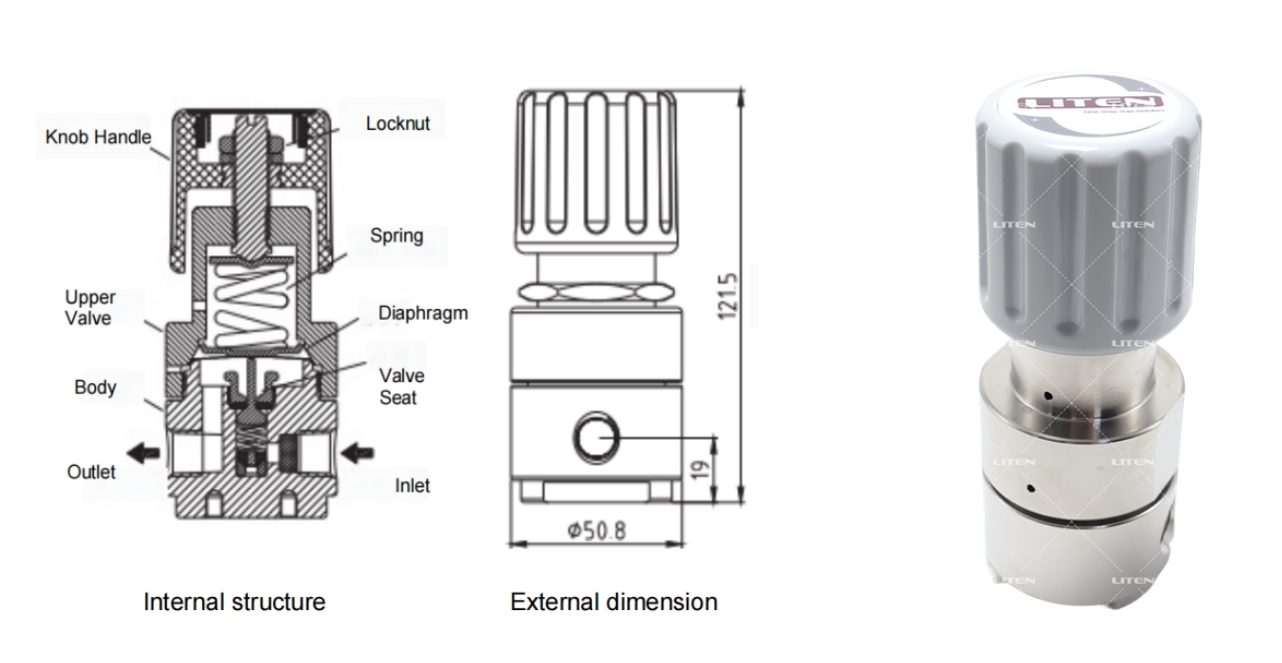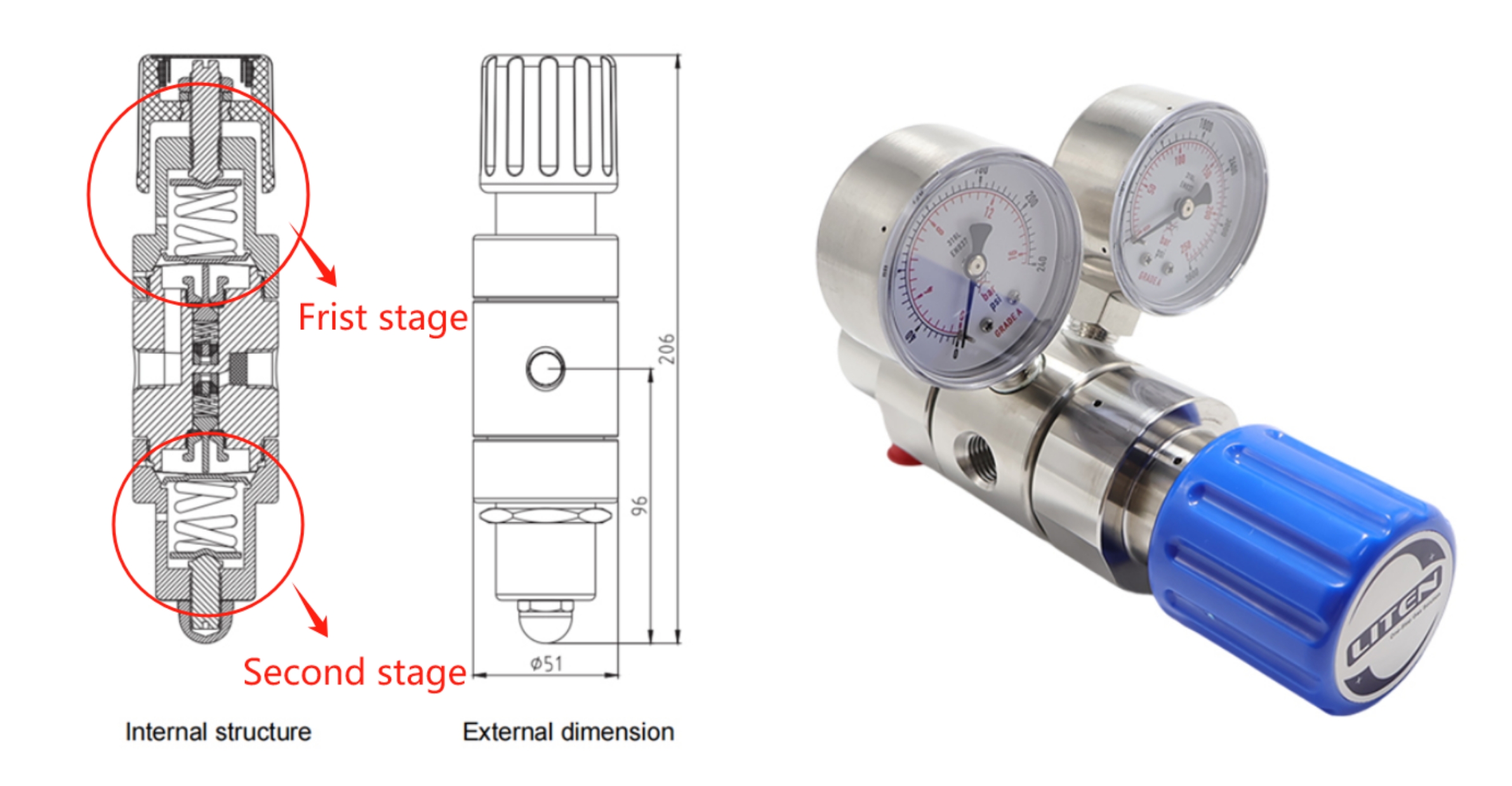BLOGS
Understanding Single-Stage vs. Two-Stage Pressure Regulators
When working with gases, controlling pressure accurately and reliably is crucial. Pressure regulators ensure safe and consistent gas delivery by reducing high-pressure gas to a usable lower pressure. Two common types of regulators are single-stage and two-stage pressure regulators. Each has distinct features, advantages, and ideal applications. Let’s explore their definitions, working principles, and how to choose the right one for your needs.
What Is a Single-Stage Pressure Regulator?
A single-stage pressure regulator reduces high-pressure gas to a set lower pressure in one step. It uses a spring-loaded valve mechanism that balances the force of the incoming gas pressure against a spring to control the outlet pressure.
How it works:
• High-pressure gas enters the regulator.
• The gas pressure pushes against a diaphragm or piston.
• This pressure compresses a spring, opening or closing the valve to maintain the set outlet pressure.
• When the outlet pressure reaches the set value, the valve closes to prevent further pressure increase.
Advantages:
• Simple design and easy to use.
• Lower cost compared to two-stage regulators.
• Suitable for applications where precise pressure control is not critical.
• Typical uses: Basic gas cylinders, welding and cutting, gas filling, and other general-purpose applications where minor pressure fluctuations are acceptable.

What Is a Two-Stage Pressure Regulator?
A two-stage pressure regulator reduces gas pressure in two sequential steps for better control and stability.
How it works:
• The first stage lowers the high inlet pressure to an intermediate pressure.
• The gas then flows to the second stage, which further reduces the pressure to the desired outlet level.
• Each stage has its own diaphragm and spring mechanism, working independently to maintain stable pressure.
Advantages:
• Provides much more stable and consistent outlet pressure.
• Minimizes pressure fluctuations even as the gas cylinder empties.
• Ideal for applications requiring high precision and stability.
• Typical uses: Laboratories, industrial automation, medical equipment, and other settings where pressure consistency is critical.

Single-Stage vs. Two-Stage Regulators: Key Differences
|
Feature |
Single-Stage Regulator |
Two-Stage Regulator |
|
Pressure Control |
Reduces pressure in one step; less stable output |
Two-step reduction; highly stable output |
|
Precision |
Lower precision; output pressure may fluctuate |
High precision; maintains constant pressure |
|
Complexity |
Simple design |
More complex with two independent stages |
|
Cost |
More affordable |
Higher upfront cost |
|
Typical Applications |
General use, welding, gas cylinders |
Critical applications like labs, medical devices |
How to Choose the Right Regulator?
Choose a single-stage regulator if:
○ You need a cost-effective, simple solution.
○ Your application can tolerate some pressure variation.
○ You use gas intermittently or for less sensitive tasks.
Choose a two-stage regulator if:
○ You require precise, stable pressure control.
○ Your process is sensitive to pressure fluctuations.
○ You operate in environments where consistent gas delivery is critical.
Summary
Both single-stage and two-stage pressure regulators serve important roles in gas pressure management. Single-stage regulators offer simplicity and affordability for general use, while two-stage regulators provide superior precision and stability for demanding applications. Understanding your specific pressure control needs will help you select the best regulator for your situation.

